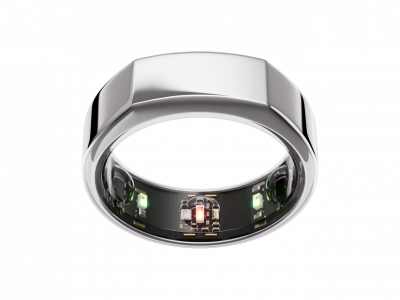Narwhals, sharks, and polar bears can help medical professionals improve care for patients with mental health struggles—and patients with conditions such as depression and bipolar disorder can offer insights that will help the conservation of many wild animals.
That’s what a first-of-its-kind project by researchers from UBC, the University of Toronto, Windsor University, and Dalhousie University is proposing.
The project, a collaboration between statisticians, ecologists, and mental health researchers, just received $210,000 in funding from the Canadian Statistical Sciences Institute (CANSSI).

Oura Ring ©Oura
“The field of bio-logging animals and the field of human wearable devices have been operating in two separate silos,” said Dr. Marie Auger-Méthé, assistant professor and ecological statistician at UBC’s Institute for the Oceans and Fisheries (IOF) and Department of Statistics, and one of the team’s lead researchers. “There’s been statistical development in both fields to try to improve detecting certain behaviours of interest using bio-logging devices. Ecologists and medical researchers are using exactly the same data. We’re looking at animals, some human and some not human, and so the methods we develop in both fields share many commonalities.”
Mental health researchers have been seeking ways to use wearable bio-logging devices to alert them when patients have changes in behaviour that indicate a crisis, such as a sudden decrease in movement for patients with depression.
Ecological researchers use similar devices to track animal movement and learn where animals are doing important behaviours, such as foraging and resting, so that they can locate conservation areas.
Common roadblocks have stunted progress in both fields, according to Auger-Méthé.

Image by Margo Tanenbaum from Pixabay
The researchers hope to advance the development a statistical tool called hidden Markov models. These models are useful for predicting behaviours that can’t be observed directly, but which drive changes in the movement data recorded by things like bio-logging devices.
By tweaking the hidden Markov model framework, they think they can better differentiate subtle behaviours, for example, whether someone with depression can’t get out of bed because of a crisis or if they are simply streaming an exciting new TV show.
Other problems the group will tackle include understanding “feedback loops,” or how physiological processes such as eating and sleeping affect behaviour, and discrepancies between observed behaviours and those recorded by tracking devices.
Everyone on the team will have unique, field-specific insights to offer, and the goal is to bring people together to solve shared problems, according to Dr. Vianey Leos Barajas, a University of Toronto assistant professor in the Department of Statistical Sciences and School of the Environment, ecological statistician and a lead investigator on the project.
“One benefit of working in the medical field is that you have a doctor who is collecting information from patients that she knows very well,” Leos Barajas said. “You have observations that you might not be able to get with a free-roaming animal. From the ecologist’s perspective, maybe we’ll get an understanding of just how beneficial it is to have that additional information, that understanding of who that person is, their tendencies, the variability across patients, and how we might be able to apply that to our work with the free-roaming animals.”
Researchers in the mental health field should have much to learn from the statistical ecologists as well, according to Leos Barajas.
“I think they’ll get a broader sense of the types of inferences you can make from these datasets, because for now, I’m not sure if they use position data as much as we do with animal movement,” she said. “They will gain an understanding of how this type of data is used across multiple species, how it varies among species, and the types of insights the ecologists are trying to gain.”
The team will meet for yearly workshops, both online and in-person, and participate in biannual research meetings and monthly reading groups. Graduate students and postdocs will also meet monthly to review and solve related statistical problems.
The project’s funding starts in April 2022, and the first steps will include recruiting new PhD students.
Tags: animal movement, bio-logging, biology, conservation, funding, Marie Auger-Methe, marine mammals, Modelling, narwhals, physiology, polar bears, SERG, sharks, statistical ecology